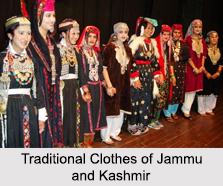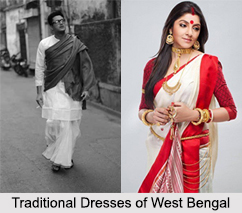 Costumes of Tripura
Costumes of Tripura
Tripura, a land known for its rich heritage of culture and artwork, boasts a diverse range of traditional costumes that reflect the artistic fervor and weaving talent of its people. The costumes of Tripura are distinct from those of other North-East Indian states, with unique patterns and designs that set them apart. With skilled weavers and a deep-rooted tradition of craftsmanship, Tripura`s traditional attire showcases the region`s cultural identity and historical significance.
Costumes Worn by Women
The women of Tripura, particularly those from tribes such as the Khakloo, Halam, Lushei, and Kuki-Chin, excel in the art of weaving and diligently preserve their traditional costumes. The traditional dress of the Khakloo tribe, which shares similarities with other fellow tribes, is characterized by a plain dressing style suitable for the hilly climate and regular work. Infants are typically kept undressed, except during winter and the rainy season when suitable garments are used. As children grow older, they often wear a loincloth.
The traditional attire for women consists of two main garments, namely the Rinai and the Risa. The Rinai is a larger cloth that is draped around the waist and reaches the knee, providing coverage and protection. The Risa, a shorter piece of cloth, is worn as an upper garment, passing under the arms and concealing the chest region. The Risa is often adorned with beautiful embroideries, while the Rinai showcases different patterns and designs specific to each clan. However, in modern times, younger girls prioritize blouses over Risa for their convenience, although wearing Risa during weddings remains mandatory for some clans. Women also use headdresses while working outside.
Adornments and Jewelry
The women of Tripura accentuate their attire with various indigenous ornaments, including silver chains with coins, silver bangles, and bronze ear and nose rings. They also adorn themselves with flowers, adding a touch of natural elegance to their appearance. The neck areas of women are often adorned with strands of beads and coins, creating a vibrant and alluring display of tradition and beauty. The Lushei tribe, however, exhibits a more modest approach to finery in their costumes, with every woman donning a dark blue cotton fabric as a skirt or petticoat. This cloth is held firmly by a corset made of brass wire or string. The Rinai-like cloth, reaching down to the knees, is complemented by a short white jacket, further enhancing their sobriety and grace.
During festive and celebratory occasions, women`s costumes take on an extra element of grandeur. Dance performances, in particular, witness the addition of a dignified headgear, featuring a coronal made of brass and colored cane, adorned with porcupine quills. The tips of these quills are decorated with tufts of contrasting red wool and studded with green feathers from parrot wings, creating a visual spectacle that embodies the joy and mirth of these festive moments.
Costumes Worn by Men
The traditional costume for men in Tripura comprises a towel-like sheet of loin cloth called Rikutu Gamcha, which is worn along with a self-woven shirt known as Kubai. To combat the scorching heat of the sun while working outdoors, men often resort to wearing a pagri, or turban, as a practical measure. However, the influence of Western culture is evident among the younger generation, as they often prefer to wear shirts, pants, and other modern styles of clothing.
Diversity in Costumes of Tripura
The costumes of Tripura exhibit a striking difference from those of other northeastern Indian states in terms of pattern and design. This frontier hilly state, known for its skilled weavers, prides itself on preserving its indigenous art forms. The local tribes, including the Khakloo, Halam, Lushei, and Kuki-Chin tribes, excel in the art of weaving, which is evident in their diligently crafted traditional costumes.
The Khakloo tribe, along with other tribes of Tripura, embraces a plain dressing style suitable for the hilly climate and regular work. The daily work attire for adult males consists of a towel-like sheet of loin cloth called Rikutu Gamcha, paired with a self-woven shirt known as Kubai. To combat the blazing sun, men often don a turban or pagri. However, the younger generation has also been influenced by Western fashion, opting for shirts, pants, and other modern styles.
Preserving the Heritage of Costumes
The simplicity and attractiveness of Tripura`s traditional costumes can be attributed to the artistic fervor and weaving talent of its people. The costumes not only serve as a cultural symbol but also represent the region`s deep-rooted connection with its rich heritage. While modern influences have seeped into the younger generation`s clothing choices, the people of Tripura remain proud of their traditional costumes and actively work towards preserving and celebrating their unique cultural identity.





















